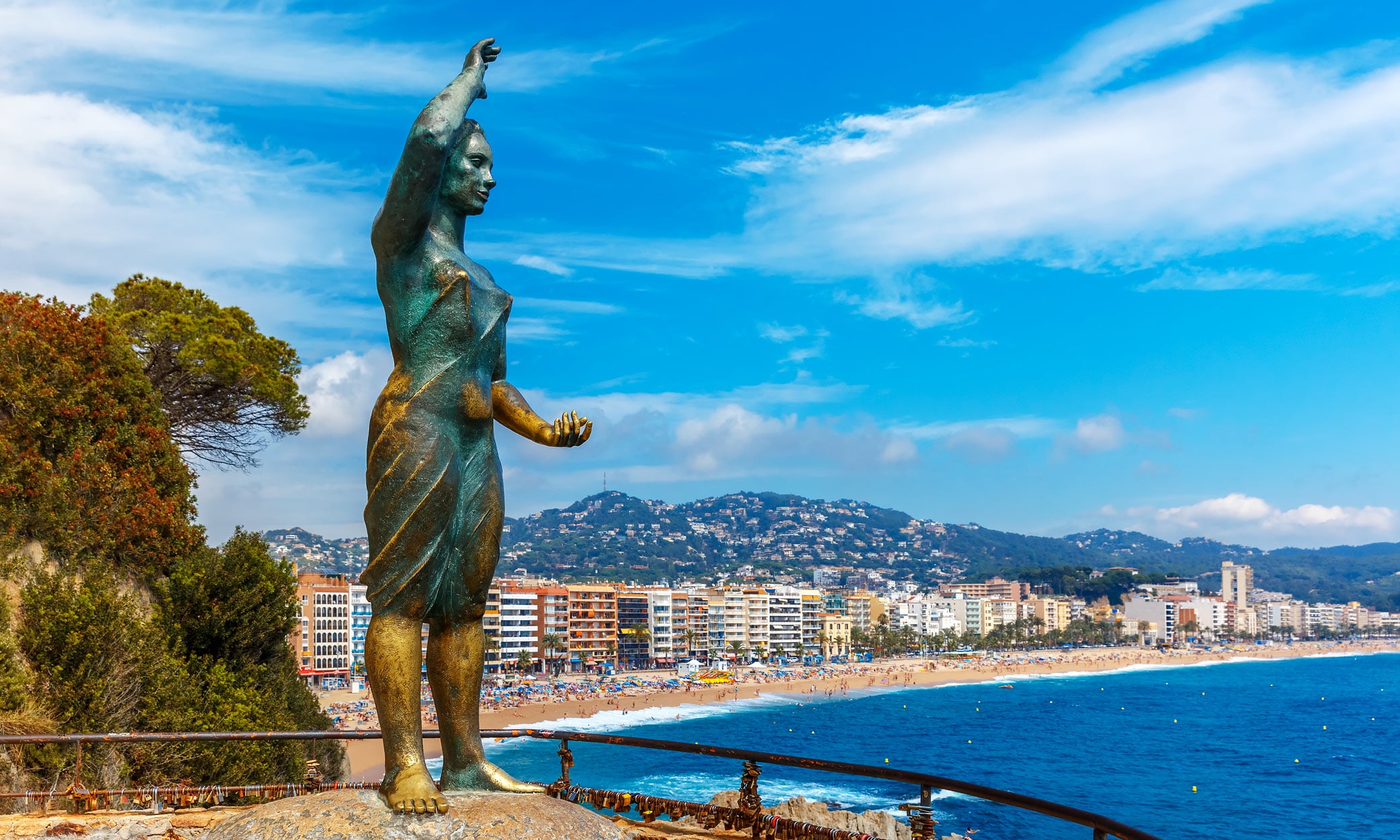
Barcelona has Spain’s biggest airport in terms of airlines and destinations. BCN offers direct flights to 218 destinations across 64 countries, serviced by 84 airlines, ranking it above Madrid. In Europe, BCN now ranks among the top 10 airports in terms of the number of airlines and destinations. So we’re not exactly stuck with the choice here regarding international travel.
Costa Brava residents always welcome the resumption of flights from Girona-Costa Brava Airport every spring, but the routes and schedules typically change from one year to the next. For this reason, and for a greater choice of destinations, we often use Barcelona Airport. Sometimes, it feels like making it to BCN from the Costa Brava is as much a part of the journey as the actual flight.
To drive or not to drive.
That is the question! The quickest way to get to BCN Airport from the Costa Brava by public transport is to take a taxi from door to door – if you’re prepared to pay for it, of course! For example, the suggested price from the central Costa Brava towns of Calonge-Sant Antoni or Palamós is €200-220, depending on whether you travel day or night. Prices for towns further north will be higher, and further south should cost you a bit less.
If you don’t want to pay for a cab, driving your own car is the fastest way. Driving is handy if you have a lot of luggage, but the main issue is parking, both in terms of cost and how far from the airport you end up parking and how much extra time you need to allow to reach your terminal.
Parking
There are 12,000 parking spaces at Terminal 1 and another 8,600 at Terminal 2. Leaving your car in either airport parking lot costs around €20.95 per day for the first four days without advance booking. Booking ahead reduces the cost considerably, and setting up an account during booking gives you a further discount. All prices can be checked and reserved via the Aena Parking website.
For a more economical option, consider aparca&go long-term parking. As of 2025, charges start at €13.45 for the first day, then decrease with more extended stays. It includes a shuttle service to the terminals. They also offer an “Express” service (with a pre-booked barcode for automatic entry/exit) and a “Premium” valet option right at the terminal. Extra services include a car wash and ITV while you’re away. Info is available in several languages on their website. They also operate at Barcelona-Sants railway station.
The alternatives
If you are going to be away for a while, leaving your car at the airport could cost as much as your flight! Depending on where you are coming from, there are alternatives to driving.
Hop on the bus, Gus!
There are coach services with the Alsa and Sagalès companies between BCN Airport and Girona or Figueres, but the Sarfa (Moventis) bus company dominates in reaching Costa Brava towns. It operates three major coastal routes:
- Costa Brava Sud: From the airport to Tossa de Mar via Lloret de Mar. Up to 15 daily services to Lloret in summer; 10 continue to Tossa. Fares: €14.55 to Lloret de Mar, €16.10 to Tossa de Mar.
- Costa Brava Nord: Sparse service to Empuriabrava, Roses, Cadaqués. One daily year-round, two in summer. Price to Cadaqués: €29.95, duration over 3 hours.
- Costa Brava Centre: Serves Sta Cristina d’Aro, St. Feliu de Guíxols, S’Agaró, Platja d’Aro, St. Antoni de Calonge, Palamós, Mont-ras, Palafrugell, and sometimes Caldes de Malavella and La Bisbal. Nine services are provided daily in summer; some start from Estació del Nord in Barcelona. Summer-only services run to L’Escala via Begur, Pals, Torroella de Montgrí. Fares range from €19.55 (Santa Cristina d’Aro) to €26.80 (L’Escala).
Tickets can be purchased online or from drivers/machines (most buses accept cards). The Sarfa website isn’t the most user-friendly, but the information is there if you are patient.
Train
There is no railway along the Costa Brava anymore, but a helpful workaround exists. Caldes de Malavella, 18 km south of Girona, lies on the R11 line from Portbou to Barcelona. Although there are no direct services to BCN Airport, it can still be a handy link, especially for Terminal 2.
Free parking is available at Caldes station for extended stays. Trains take 70-80 minutes to Passeig de Gràcia, where you can switch to the R2 Nord line directly to Terminal 2 (far easier than transferring at Barcelona Sants).
If your flight is from Terminal 1, allow extra time for the 4km (free) shuttle transfer between terminals.

Commuter trains are known as Rodalies, and all R11 trains from Caldes de Malavella terminate in Barcelona Sants, from where you can catch the R2 line to Terminal 2 in El Prat Airport. A handy little tip is to get off the R11 train at the stop just before Sants, namely Passeig de Gràcia, and catch the airport train.
In Sants, you will have to disembark from your train, take an escalator up to ground level, figure out which track the R2 to the airport is leaving from, and take an escalator back down to another platform. The advantage of Passeig de Gràcia is that there is only one platform each way, so you get off your train from Caldes and wait for the R2 airport train. Easy peasy!
BlaBlaCar
Another option worth considering, if you don’t mind travelling by car with strangers, is BlaBlaCar. To use this option, go to the BlaBlaCar website, enter where you are travelling from and the time and date you wish to travel to the airport (or anywhere else), and see if there is someone who will be driving there who can offer you a lift for a (usually) very reasonable fee.
The advantage of BlaBlaCar is that it is pretty economical, and you can often arrange the journey from door to door. The downside is that you may or may not find someone doing the journey you want when you want. Because there is no need to purchase bus or train tickets in advance, you can always wait till the last moment and keep checking BlaBlaCar to see if a lift turns up. If it doesn’t, you can still take the bus or train.
So, what to do…?
As with everything, there are pros and cons when deciding how to get to the airport.
Taxis aside, going by car is probably quickest if you’re happy to pay for parking while you are away – although if you are using the long-term car park, it might not end up being a whole lot faster than public transport when you factor in the extra time to get from your car to the terminal building. If you are leaving but not coming back (although we can’t imagine why anyone would want to do that!), you’ll probably want to consider the public transport options.
The bus might not be everyone’s favourite means of travel, but it certainly is the easiest if you are on its route. You hop on at your closest bus stop and hop off at your terminal building (the bus stops at both terminals). The ticket prices might seem a little high when you consider that you could travel by bus from Girona to Lyon for the same price (!), but at least you’re not paying for parking while you’re away.
Tickets can be purchased from the driver or a ticket machine at any stop without a bus station. Almost all buses now have machines, allowing you to pay by bank card rather than cash. In summertime, buses are frequent, operating on a nearly hourly schedule, cutting down on waiting time.
The train is generally a preferable mode of transport than the bus if you don’t mind making your way to Caldes de Malavella, and the cost is about a third cheaper than the bus (the price varies slightly depending on which train you take). It can be a good option if you have bulky luggage but don’t want to pay to park the car at the airport, as you can drive to Caldes station, leave the car, and let the train take you the rest of the way. (Don’t forget to change trains in Passeig de Gràcia rather than Sants to make your transfer easier!) If your flight is from Terminal 1, you’ll have to allow for the (free) shuttle transfer from Terminal 2, but bear in mind that the terminals in BCN are 4km apart. Yes, 4km!!

Girona-Costa Brava Airport
Despite its name, Girona-Costa Brava Airport isn’t well-connected to the Costa Brava. From 1 July to 31 August, Sarfa operates only two daily services to selected coastal towns. Outside of that, you’ll need to take a Sagalès bus to Girona City, then another to the coast, with uncoordinated timetables. In many cases, it’s simply more practical to fly via Barcelona.
Girona Airport offers flights to 49 destinations in 15 European countries, including new connections to London Luton, Sarajevo, Lublin, Ostrava, and Budapest.
We hope this has been of some help to all you travellers out there.








